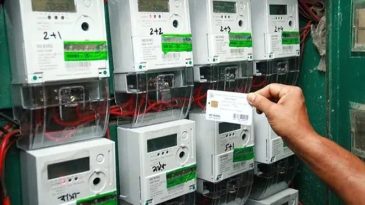- General
- Updated on June 12, 2025
Why India’s ACs Are Getting Warmer: The Reasons Behind the New Temperature Rule

The scorching Indian summer is synonymous with the comforting hum of an air conditioner. For years, many of us have instinctively punched in those low digits – 16°C, 18°C – seeking immediate relief from the relentless heat. But recently, a new conversation has emerged, one where the government is proposing a standardized AC temperature range of 20°C to 28°C. This move, spearheaded by Union Power Minister Manohar Lal Khattar, has sparked widespread debate, curiosity, and even a meme storm across social media. While some express discomfort about losing control over their personal cooling, the reasons behind this seemingly drastic step are far-reaching and critical for India’s future.
This isn’t just about making you slightly less chilly; it’s a strategic move rooted in pressing concerns about energy security, environmental sustainability, public health, and long-term economic stability. Let’s unpack the multiple layers of reasoning behind why India’s ACs are getting warmer.
The Looming Energy Crisis: Easing the Strain on the Power Grid
India is experiencing unprecedented economic growth, which, coupled with rising temperatures and increasing disposable incomes, has led to a massive surge in the adoption of air conditioners. While this brings comfort to millions, it also places an enormous and unsustainable burden on the national power grid.

Soaring Electricity Demand
Every summer, India grapples with record-breaking electricity demand. In June 2025, the peak power demand touched an alarming 241 Gigawatts (GW), and projections suggest it could climb to 270 GW. Air conditioners are a significant contributor to this surge, especially during peak hours. When millions of ACs run simultaneously at very low temperatures, it creates immense stress on the power infrastructure, often leading to grid instability and dreaded blackouts. The government’s proposed rule directly addresses this issue by aiming to flatten the energy demand curve and reduce the peak load.
Each Degree Counts: Unlocking Massive Savings
The Bureau of Energy Efficiency (BEE), under the Ministry of Power, has long advocated for optimal AC temperature. Their research indicates a compelling statistic: increasing your AC temperature by just one degree Celsius can reduce electricity consumption by approximately 6%. Imagine the cumulative effect of this small change across India’s nearly 100 million AC units, with an additional 15 million being added annually! If the country shifts from typical settings of 18-20°C to the recommended 24°C, the energy savings could be substantial. This seemingly minor adjustment at the individual level translates into massive megawatts saved at the national level.
A Vision for Economic Stability: Avoiding Billions in Infrastructure Costs
The strain on the power grid isn’t just about keeping the lights on; it has significant economic implications. Building new power plants and upgrading transmission infrastructure to meet ever-increasing demand requires colossal investments.
Preventing Future Investments
A study by the University of California, Berkeley, cited by Bloomberg, estimates that stricter energy regulations for air conditioners could help shave off up to 60 GW from peak power demand by 2035. This monumental reduction would eliminate the need for approximately ₹7.5 trillion (equivalent to $88 billion) in investments for new power plants and grid infrastructure. By managing existing energy consumption more efficiently, India can strategically reallocate these vast resources towards other critical development projects, bolstering its overall economic health.
Lowering Household Bills
While the national savings are staggering, the new rule also promises tangible benefits for the average Indian household. By adhering to the slightly warmer temperature settings, consumers can expect a noticeable reduction in their monthly electricity bills. An average Indian household could save between ₹300-₹800 per month, directly benefiting their personal finances and contributing to greater economic relief across urban India.
The Climate Imperative: Reducing India’s Carbon Footprint
Beyond immediate energy security and economic gains, the AC temperature rule is a crucial component of India’s larger commitment to combating climate change and achieving its Net Zero emissions target by 2070.
Less Energy, Less Emissions
A significant portion of India’s electricity is still generated from fossil fuels, primarily coal. When ACs consume less electricity, it directly translates to a reduction in the burning of coal, thereby lowering carbon emissions. Every unit of electricity saved means fewer greenhouse gases released into the atmosphere, helping to mitigate the escalating climate crisis. The 6% energy saving per degree increase also directly correlates to a proportional reduction in carbon emissions.
Sustainable Cooling Practices
This initiative aligns perfectly with India’s National Cooling Action Plan (NCAP), which aims to provide sustainable cooling while minimizing its environmental impact. By promoting responsible cooling habits, the government is fostering a culture of energy efficiency and environmental consciousness among its citizens, setting a powerful precedent for other developing nations.
Prioritizing Public Health: The Unseen Benefits of Moderate Cooling
While the immediate reaction to warmer ACs might be discomfort. Health experts largely support the move, citing several benefits of maintaining moderate indoor temperatures.
Avoiding “Temperature Shock”
Stepping out from an aggressively cold, 16°C room into a scorching 40°C outdoor environment can cause a “temperature shock” to the body. This abrupt change can weaken the immune system, making individuals more susceptible to respiratory illnesses, colds, and fatigue. Doctors emphasize that maintaining a smaller temperature difference between indoors and outdoors is healthier for the body’s natural acclimatization process.
Combating Dryness and Respiratory Issues
Extremely cold AC environments can lead to dry eyes, dry skin, and aggravated respiratory conditions like asthma and sinusitis. A moderate temperature range, as proposed by the new rule, helps maintain healthier humidity levels indoors, promoting better respiratory health and overall well-being. Even better sleep quality is linked to a slightly warmer, more natural sleeping environment.
A “First-of-its-Kind Experiment”: India as a Global Leader
Union Power Minister Manohar Lal Khattar termed this initiative a “first-of-its-kind experiment” in India. While other countries like Japan, Spain, and China have introduced similar recommendations or mandates for public spaces (often setting minimums at 25°C or 26°C). India’s proposed rule aims for a broader application, potentially encompassing residential, commercial, and even vehicular sectors. This bold step positions India as a leader in sustainable cooling practices, demonstrating a proactive approach to balancing development with environmental responsibility. If successful, it could serve as a vital model for other nations facing similar challenges.
Read Also : The Growth of E-Commerce in India: How Online Shopping is Shaping Retail
Conclusion
the decision to encourage or mandate warmer AC temperature in India is not arbitrary. It’s a meticulously planned strategy born out of necessity and a forward-looking vision. From stabilizing the national power grid and preventing costly infrastructure. Investments to safeguarding the environment and promoting public health, the reasons are compelling. While adjusting to a slightly warmer chill might take some getting used to, the long-term benefits for India’s energy security, economy, environment, and the well-being of its citizens are undeniably worth it. It’s a collective step towards a cooler, more sustainable future.
Join the discussion
Related Articles
No results available
ResetTrending Articles


- General
- Updated on December 5, 2025


- General
- Updated on December 2, 2025


- General
- Updated on December 5, 2025


- General
- Updated on November 27, 2025


- Health
- Updated on November 24, 2025


- General
- Updated on November 24, 2025


- General
- Updated on November 19, 2025


- General
- Updated on November 19, 2025


- General
- Updated on November 14, 2025


- Tech
- Updated on November 12, 2025
No results available
Reset


